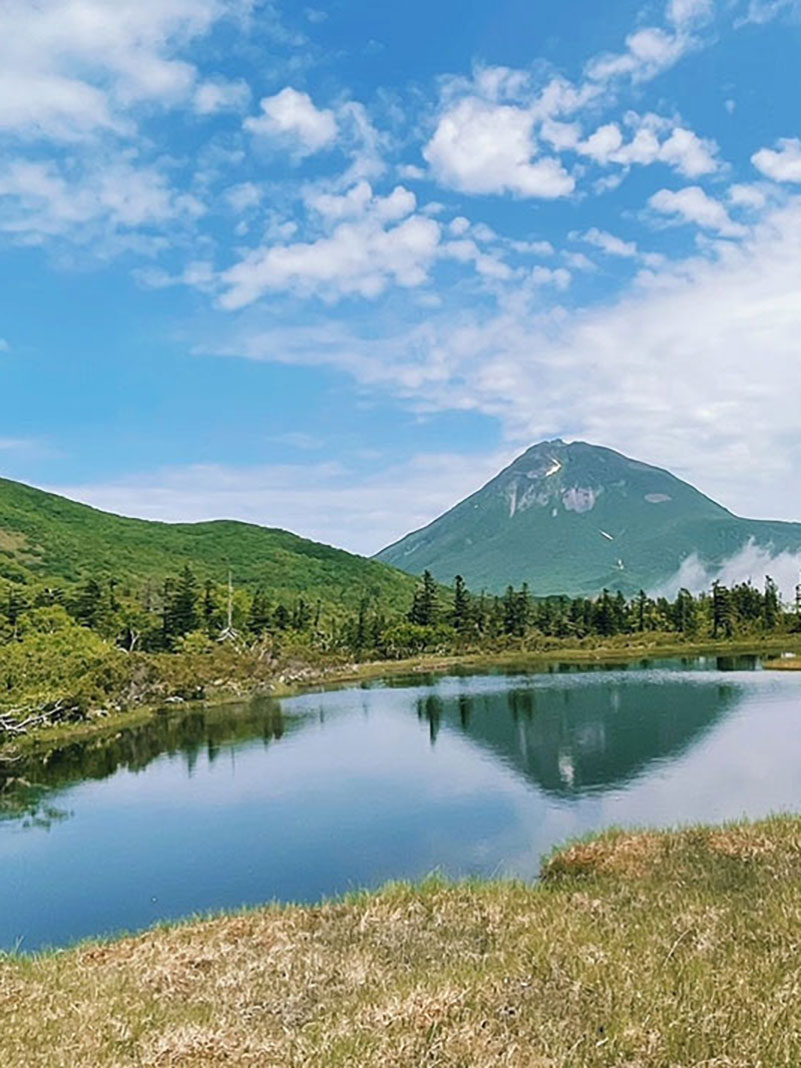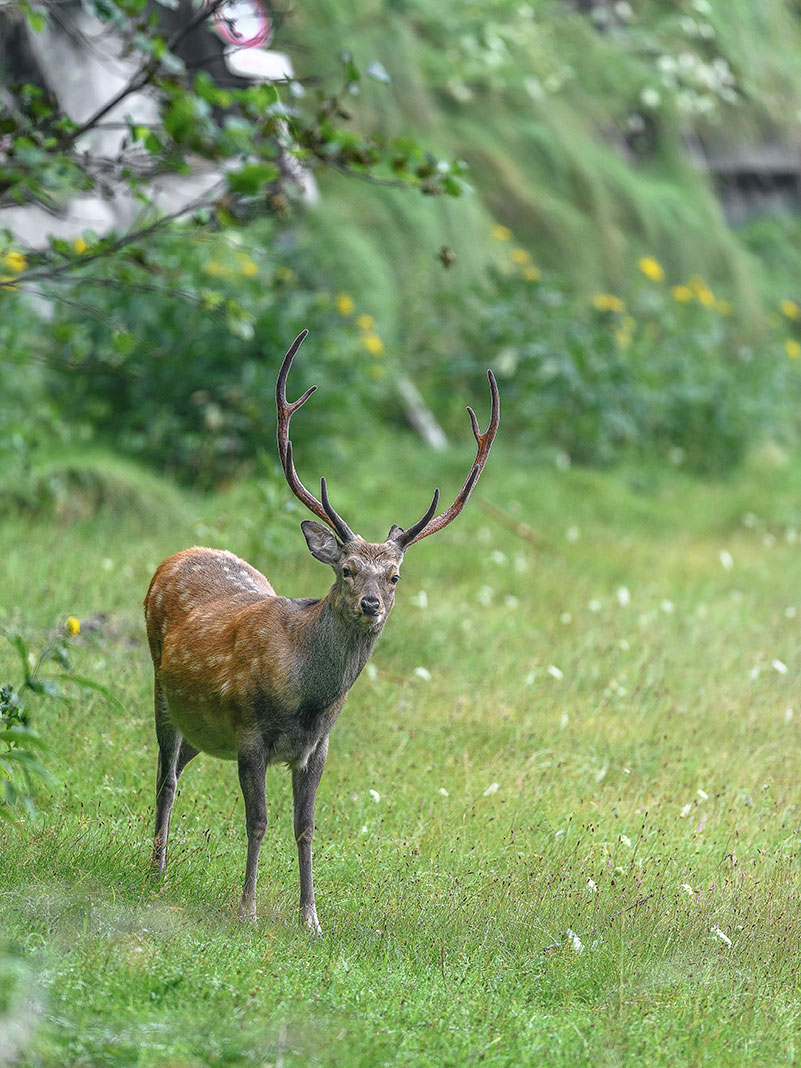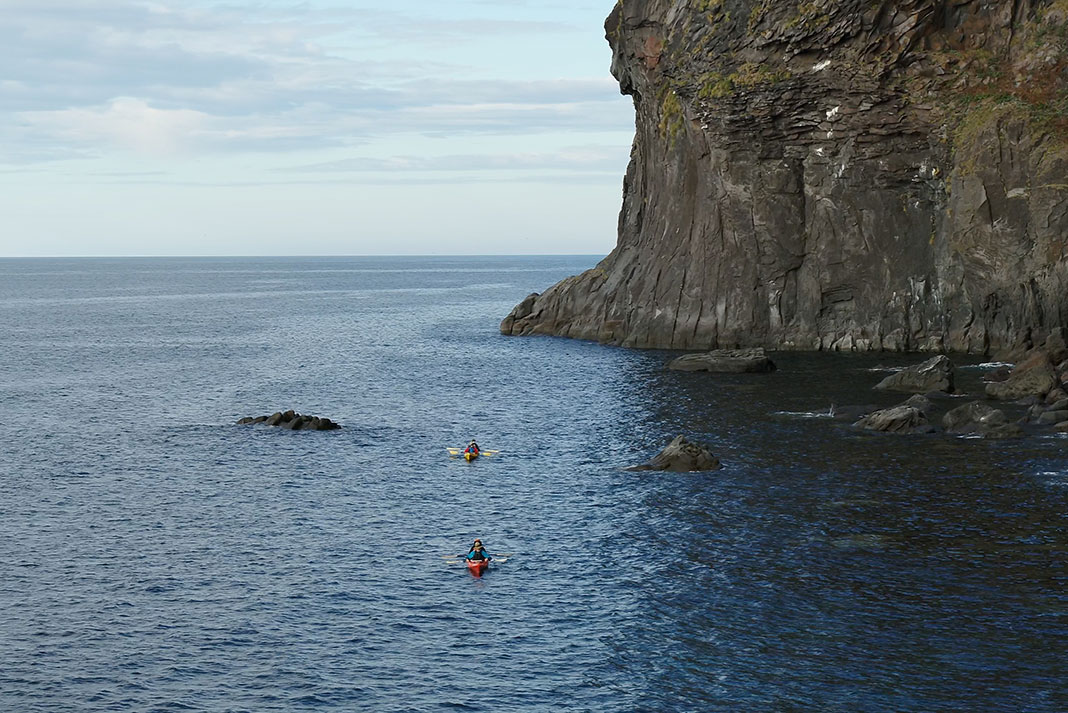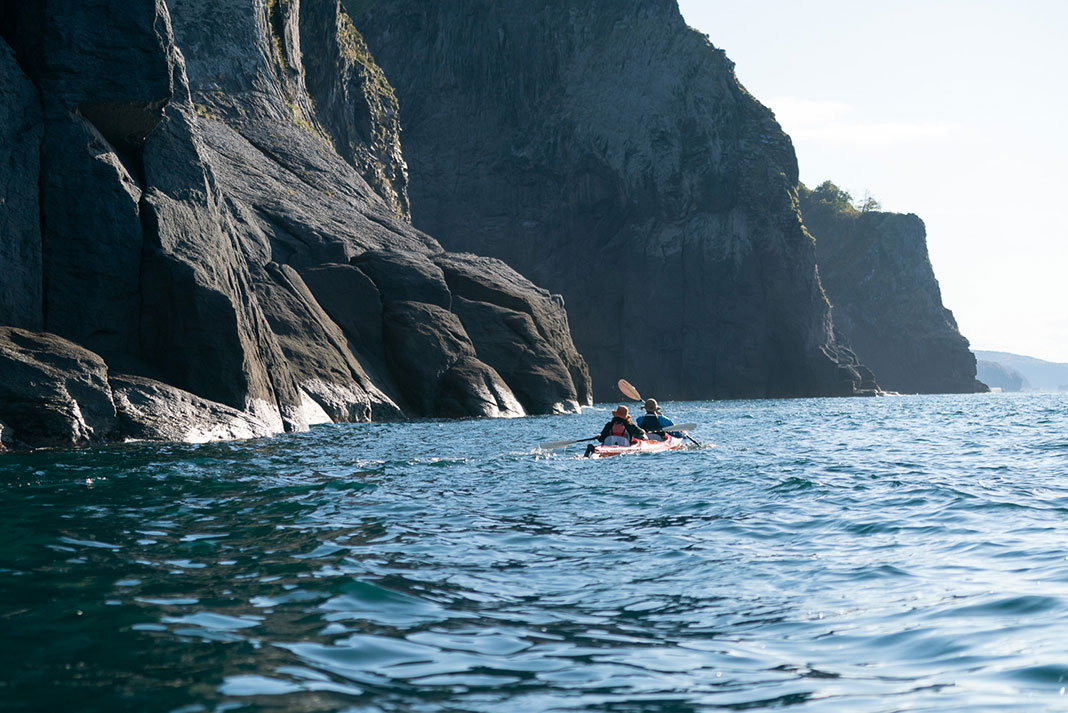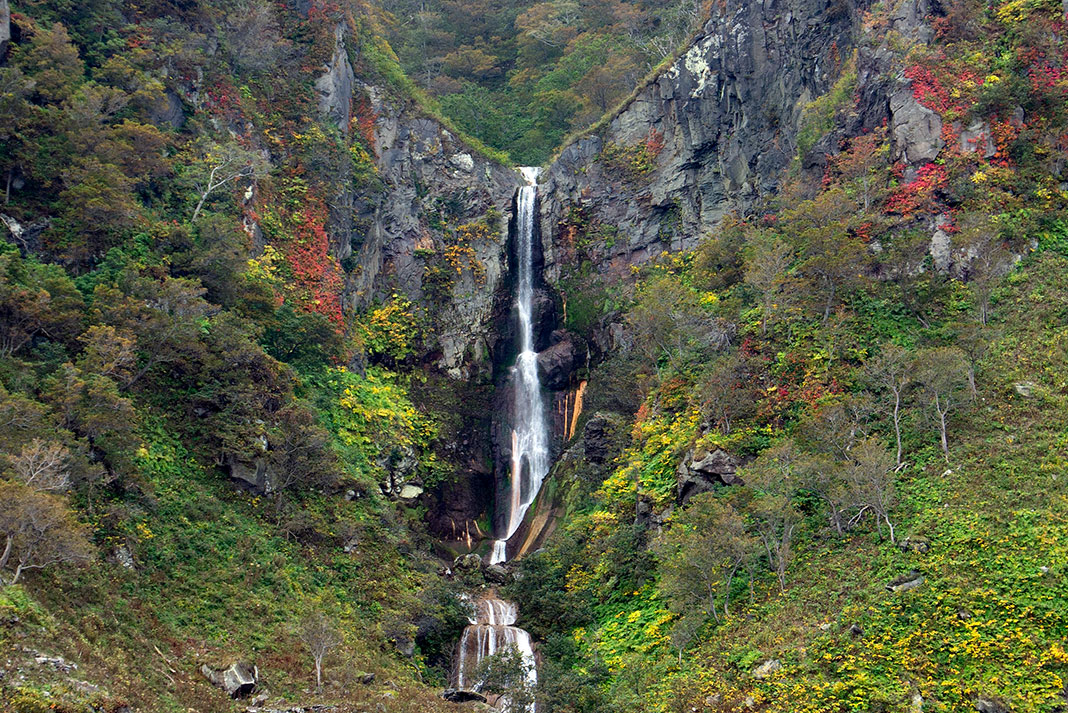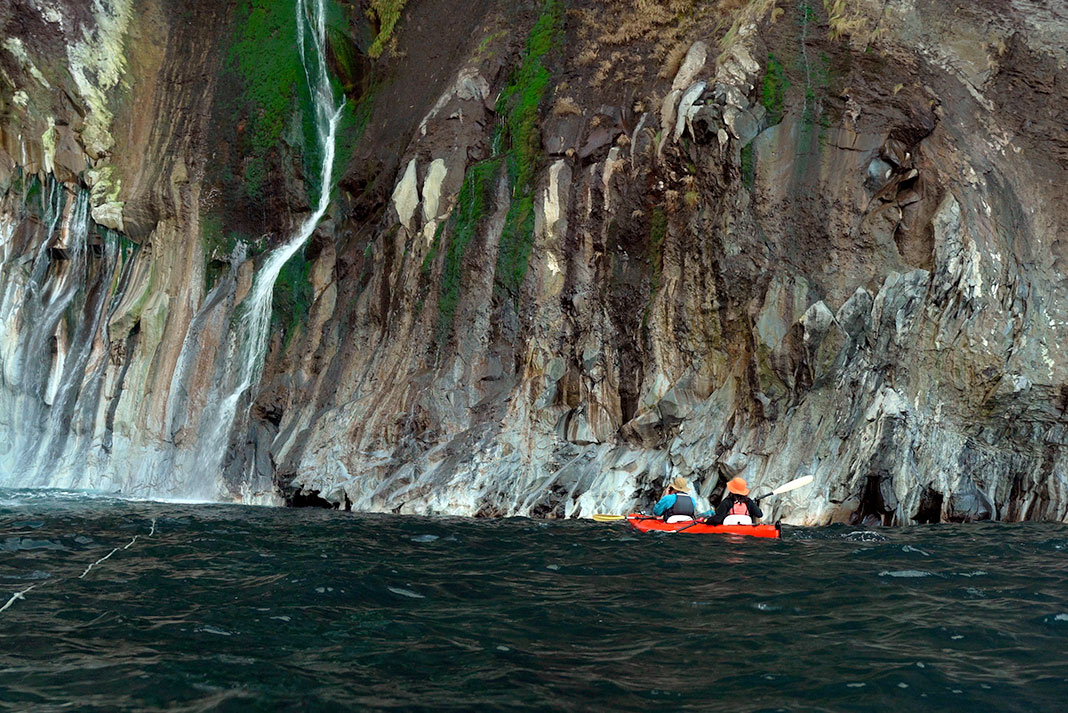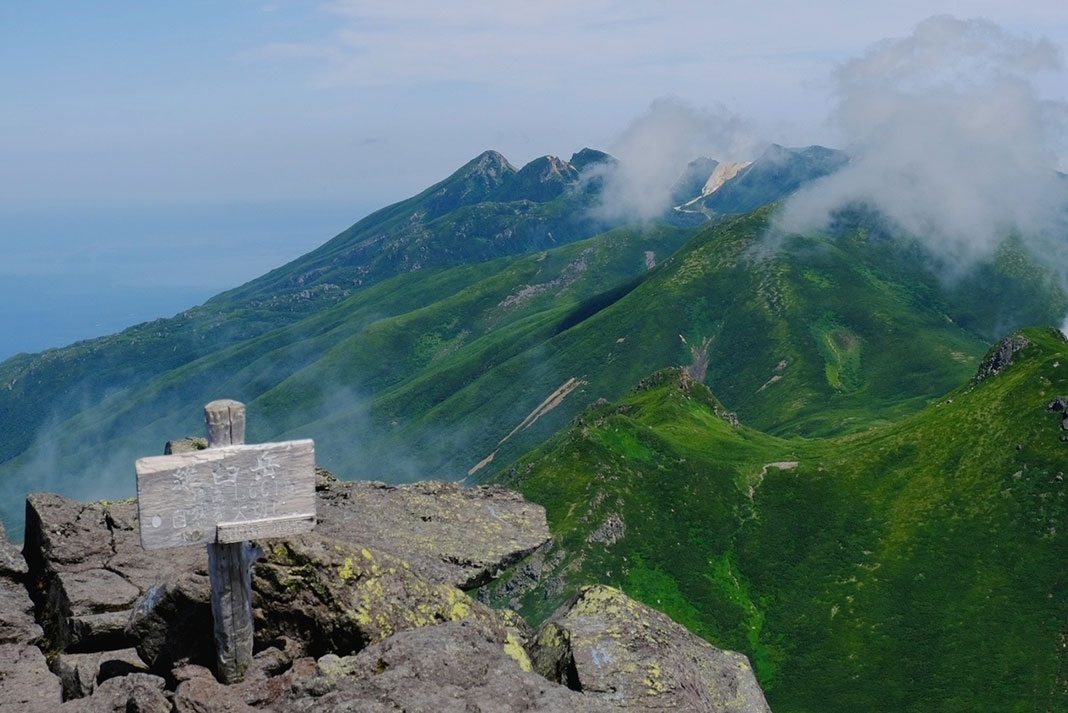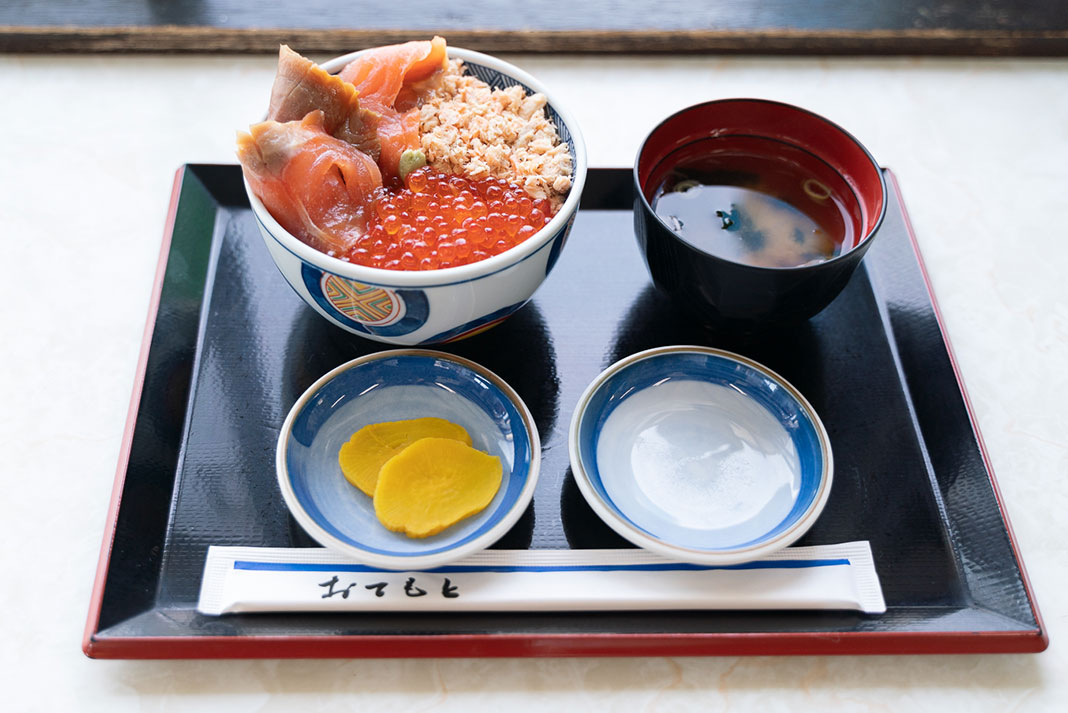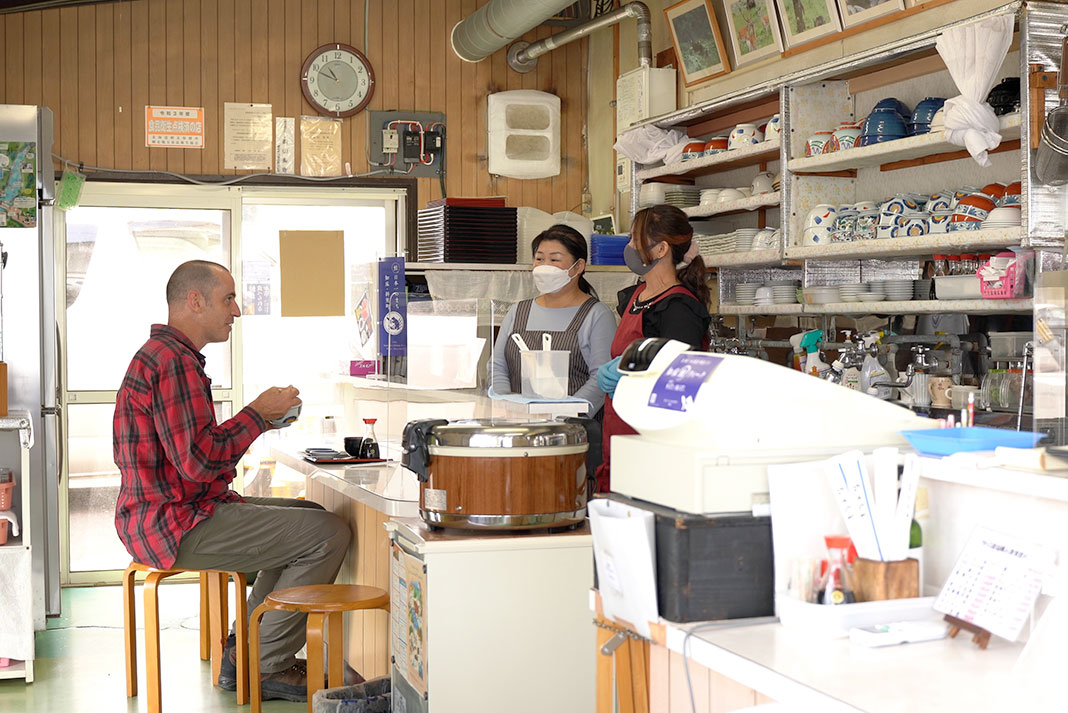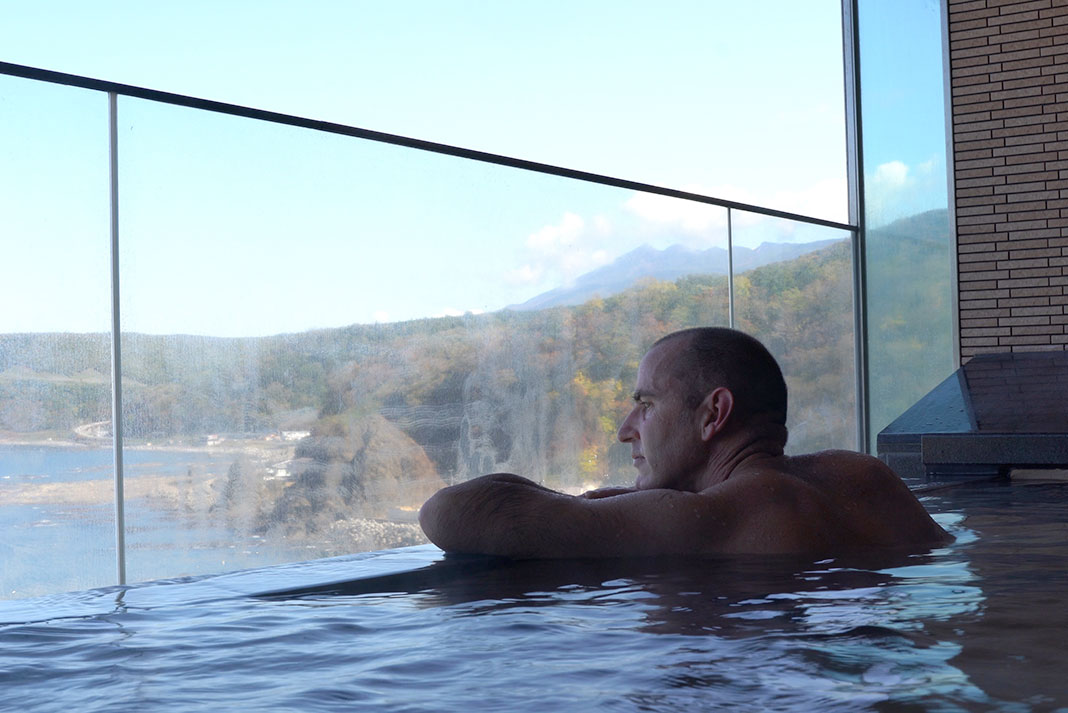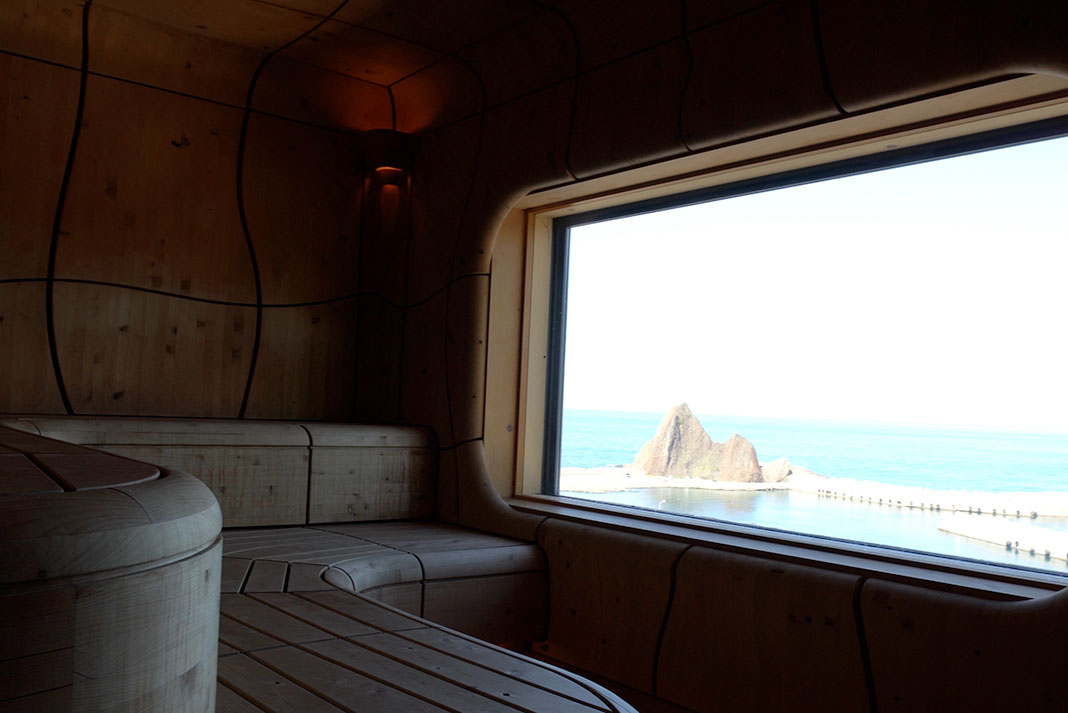Enter into a world of extremes where rugged cliffs meet untamed sea, endangered species depend on delicate life systems below the surface, and even traditionally relaxing hot springs involve adventure as they feed waterfalls. This is Shiretoko National Park, an adventurer’s—and, as you’ll see, paddler’s—paradise that only a privileged few know exists on Japan’s most northerly island of Hokkaido.
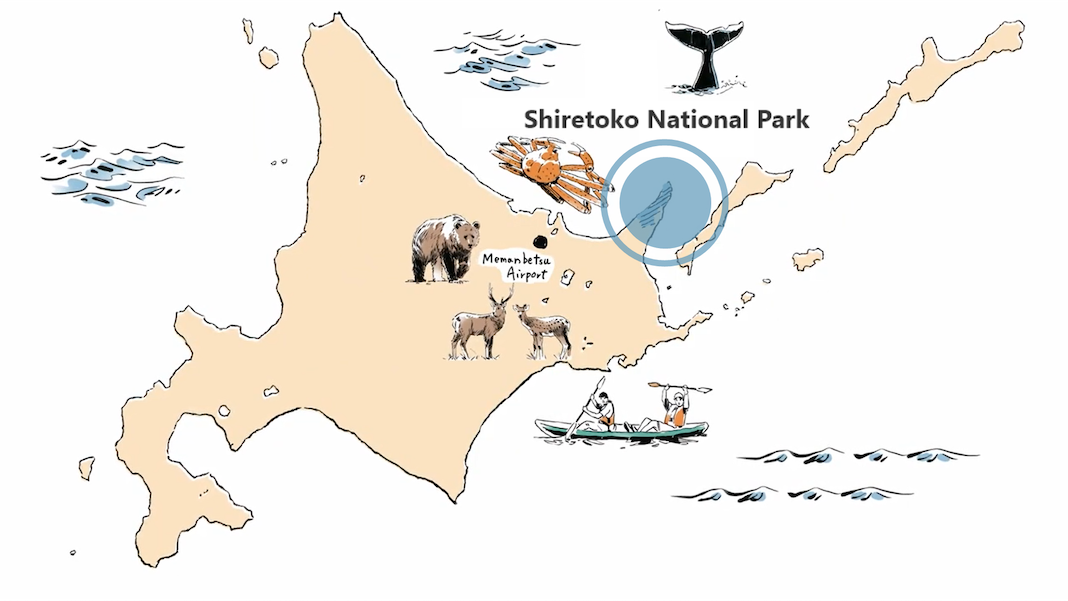
Wild and diverse in landscape, Hokkaido itself is of particular draw to adventurous travelers, those seeking out cycle touring, downhill skiing, hiking, camping and paddling. But it’s the Shiretoko Peninsula on the island’s northeastern coast that both timid and hardened adventurers alike should head to—the national park encompassing 390 square kilometers of mountainous headland and 220 square kilometers of surrounding ocean.
What makes this promontory a prime candidate for the top of your paddling bucket list?
Read on to find out.
Take in incredible scenery
“Shiretoko” derives from the Ainu—the indigenous people of Hokkaido—phrase “sir etok,” meaning “end of the Earth.” A fitting name for a narrow peninsula jutting out into the ocean, especially since it is characterized by a mountain range rising 1,200 to 1,600 meters above sea level. Whether you are traveling the edge of the peninsula by water or land, you do feel as though you are balancing on the precipice of the world.
Waterfalls, sea cliffs, lakes, rivers and sea intermingle on the peninsula, many of which can be seen from the cockpit of a kayak. But more on that later.
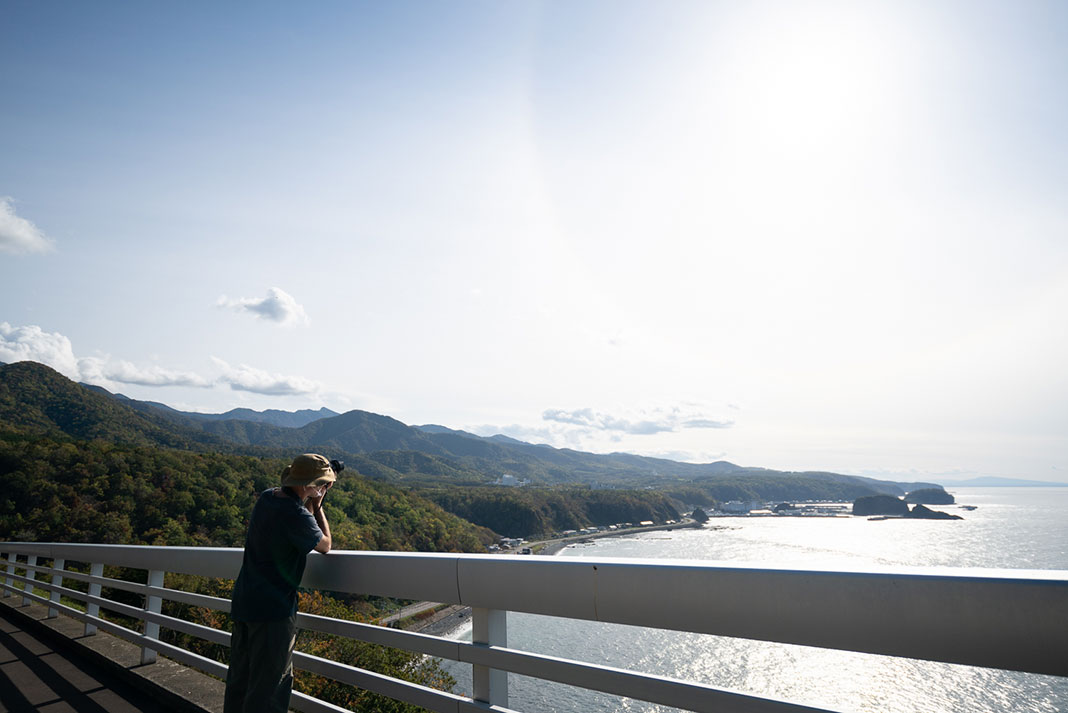
Explore untouched wilderness
No roads lead farther than three-quarters of the way up the peninsula, making for a wilderness area that is untouched by human development. If you want to reach Cape Shiretoko, where lush forest transitions to steep, rocky cliffs that drop into the turquoise-colored waters below, you’ll need to do so by boat or by foot.
Shiretoko Expedition runs the only multi-day guided sea kayaking tour in the national park, allowing you to round the cape in five to seven days. There’s a degree of flexibility built into the trip itinerary because of the unpredictability of the ocean conditions. Your knowledgeable guide will help you navigate this rugged wilderness, starting from Utoro on the west side of the peninsula and ending in the Aidomari region on the east side. The guide will also decide where to make camp along the coast, depending on weather conditions and bear activity, and instruct participants in both paddling techniques and camping skills.
Observe abundant wildlife
Home to 36 land mammal species, 22 marine mammal species and 285 bird species, you’re guaranteed to see wildlife while exploring Shiretoko National Park. Look to the sky along the coast year-round to see white-tailed sea eagles, to the surf in spring and early summer to see killer whales and to the shore year-round to see sika deer.
The star of Shiretoko is the brown bear, as the peninsula has one of the densest populations in the world. The Ainu believed these bears were gods, come down to Earth dressed in bear costumes. When the gods were done playing, they would leave their costume behind, providing the Ainu with fur and meat. Because of the high concentration of bears on the peninsula, it’s important to practice bear safety while exploring. While on a multi-day sea kayak trip, it’s highly likely you will be able to view bears along the coast. Your guide will supply the necessary bear safety equipment and knowledge so you can view these magical creatures without concern.
Birds of note include the endangered Steller’s sea eagle, which spends winters on the peninsula, and is one of the largest raptors in the world, the endangered Blakiston’s fish owl, which lives year-round on the peninsula and is the world’s largest owl species, and the black woodpecker, which is the largest woodpecker in Japan.
The Nemuro Strait on the east side of the peninsula has begun to gain attention as one of the best whale-watching sites in Japan. It’s here you can view orca, minke whale, sperm whale, Dall’s porpoise and the endangered fin whale.
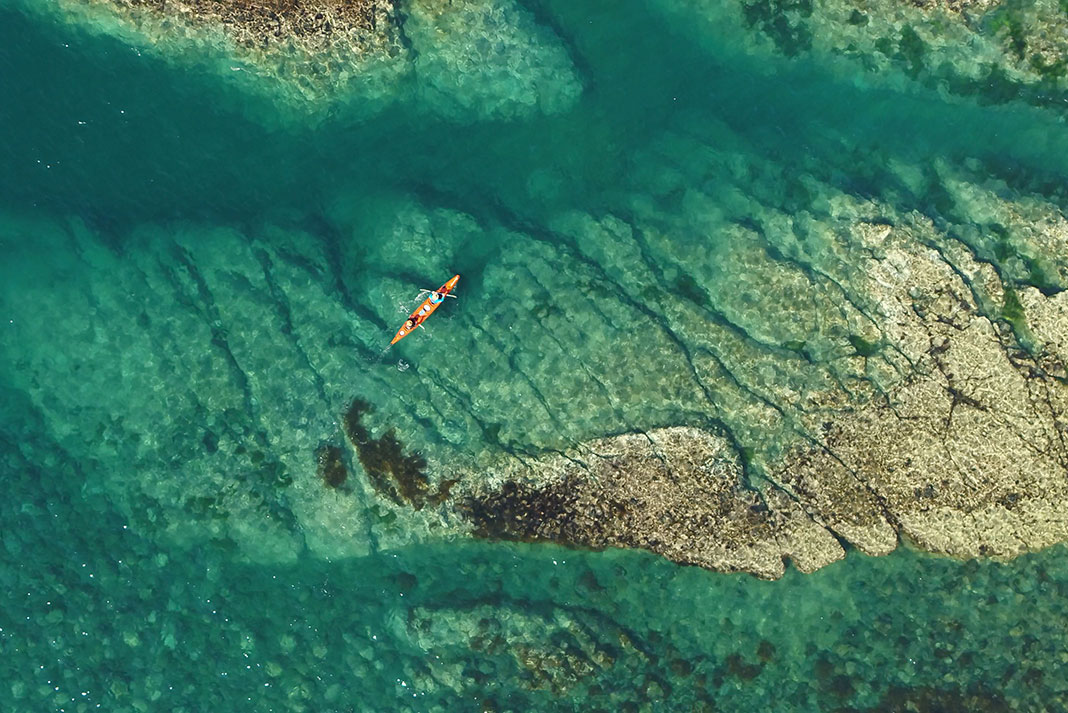
Relish the rich biodiversity
The Shiretoko Peninsula is a designated UNESCO World Heritage Site, in recognition of the fact that it is one of the richest integrated ecosystems in the world, encompassing both terrestrial and marine areas. Shiretoko experiences the formation of seasonal sea ice at the lowest latitude in the northern hemisphere, creating unique circumstances that enable an array of plants and animals to flourish here. The melting sea ice supplies nutrients that encourage the development of phytoplankton blooms, which in turn feed small fish and carry on up the food chain involving other fish, birds and mammals across ocean, rivers and forests.
The peninsula is also unique in that it is home to northern species from the continent and southern species from Honshu, the main island in Japan. It also supports a number of endangered and endemic species of animals and plants, is an important area for migratory birds and fish species, and is a seasonal habitat for aquatic animals such as the Steller sea lion, spotted seal, whales and more.
This rich biodiversity manifests in awe-striking natural beauty and exciting animal activity that ensure you’ll return from Shiretoko with far too many photos, each more dazzling than the last, and so many stories it’ll be difficult to convince your listeners of their veracity.
View towering sea cliffs
Sea ice forming along the western edge of the peninsula for thousands of years slowly eroded the rocky coastline, creating the sheer, 100-meter-high cliffs you’ll find there today. The only way to view them is from the water—and while there are boat tours that will take you up the coast, a sea kayak tour is the best way to experience them, allowing you to get in close to their base, stare up in awe and truly get a sense of their magnitude.
The multi-day sea kayaking tour with Shiretoko Expeditions will take you along the cliffs on the first day of the trip. Shorter, half-day excursions are also on offer with the Shiretoko Outdoor Guide Center. Both tours run out of the town of Utoro, situated at the entrance to the national park.
Paddle among drift ice
The paddling season on the Shiretoko Peninsula isn’t restricted to the summer months. During a small window in the winter, you can paddle among the drift ice that has formed on the Sea of Okhotsk on the west side of the peninsula. You’ll need to have a bit of luck to make this experience happen as the conditions need to be just right, with the drift ice still floating freely and the water still accessible from shore. Complicating matters more, this phenomenon occurs at different times each year. Still, if you happen to time your visit right, Shiretoko Outdoor Guide Center’s three-hour tour is not to be missed.
Visit otherworldly waterfalls
With at least 10 waterfalls within the park boundary and a handful more outside for good measure, exploring the Shiretoko Peninsula is like stepping into a dreamscape. The waterfalls vary in accessibility—some you can drive past, others you can walk to and still others you’ll need to use more creative means to reach.
The Kamuiwakka Hot Falls are fed by the Kamuiwakka River which fortuitously has a natural hot spring flowing into it. You’ll need to walk upstream to reach it and enjoy a natural hot spring bath. Be aware that climbing up to the first set of falls is a slippery endeavour and you should be cautious.
It’s a short 20-minute walk from the Shiretoko National Park Nature Center to the observation deck overlooking Furepe Falls, a waterfall known as the “Maiden’s Tears” that cascades 60 meters down the sheer cliff face into the Sea of Okhotsk below. However, to get a full view of this waterfall, you’ll need to be on the water. The Shiretoko Outdoor Guide Center hosts three-hour sea kayak tours from the end of April to the end of October to Furepe Falls and Yu no Hana Falls.
Farther up the peninsula are Kashunino Falls on the west, and O and Me falls on the east. These waterfalls are truly remote and can only be viewed by boat cruise and multi-day sea kayak tour.
Enjoy ample outdoor activities
While we obviously think paddling should be the number one thing you do while in Shiretoko National Park, inland adventures provide equally beautiful views. There are a number of hiking trails in the park, varying in length and difficulty. The Shiretoko Goko Lakes is home to five lakes nestled in a forested landscape with the Shiretoko mountain range as a backdrop. There are three options for visiting the lakes—the first being an elevated boardwalk that will take you to the first lake and back for a total distance of 1.6 kilometers. The boardwalk was designed to enable visitors to avoid bear encounters. Ground pathways offer a short loop of 1.6 kilometers and a long loop of three kilometers, the former taking you to two lakes and the latter to all five lakes. Guided tours are also available along these routes.
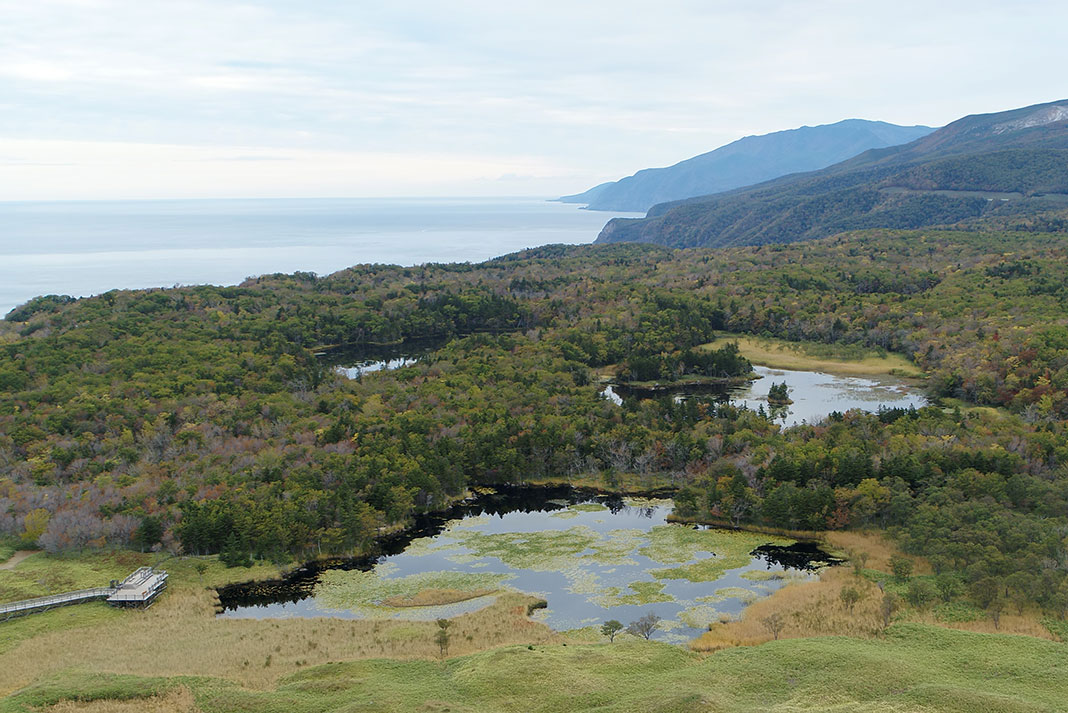
The more remote Lake Rausu, located at the foot of Mt. Chinishibetsu, requires a three-kilometer journey to reach. This is the largest lake on the peninsula, with a circumference of four kilometers. Shiretoko Factory offers guided hikes, taking you past marshes of varying size and within sight of red fox, sika deer, Asiatic chipmunks and occasionally brown bears.
For those looking to test their grit and take in mountain-top views, the Shiretoko Peninsula Traverse beckons. This 20-kilometer, end-to-end hike requires two to three days to complete. It extends from the Iwaobetsu Onsen to the Kamuiwakka Waterfall and traverses six mountains. Guided treks are run by Explore Share.
Want to truly soak up all the natural splendours of the peninsula? Pitch a tent and gather around a bonfire at Rausu Onsen Campground, located in the southeast corner of the peninsula. An extra treat, the Kuma no Yu hot spring is situated nearby.
Experience distinctive cuisine
It’s no surprise that seafood is the highlight when it comes to cuisine on the Shiretoko Peninsula. Shari, a tourist hub located at the base of the peninsula, has boasted the largest salmon catch in Japan for 16 consecutive years. In addition, sea urchins, horsehair crabs, scallops, Okhotsk atka mackerel, broadbanded thornyhead and kelp are caught in abundance in the surrounding waters.
If you want to experience the true taste of Shiretoko, though, dishes containing locally sourced salmon are the way to go. The recommended dish contains salmon roe and salmon sashimi served on a bed of rice. Visit Utoro Gyoko Fujinbu Shokudu, a restaurant run by the wives of local fishermen, to try this dish which they call Triple Salmon Rice Bowl—their take involves the addition of pulled and roasted salmon. This dish is best enjoyed at the end of summer, when the salmon roe is more flavourful and the salmon is fattier.
Relax at a hot spring
No visit to Shiretoko National Park would be complete without a visit to a hot spring. Because the landscape of the peninsula was formed by volcanic activity, hot springs are scattered across the land mass. What better way to unwind after a day of paddling or trekking than soaking in a warm bath?
Utoro in particular has many well-equipped hot spring inns, including the Kitakobushi Shiretoko Hotel & Resort. Here you can enjoy resort amenities coupled with panoramic views of the Sea of Okhotsk. Open-air baths are offered here, allowing you to breathe in the fresh ocean air and gaze out to the endless horizon.
Find out more here:





